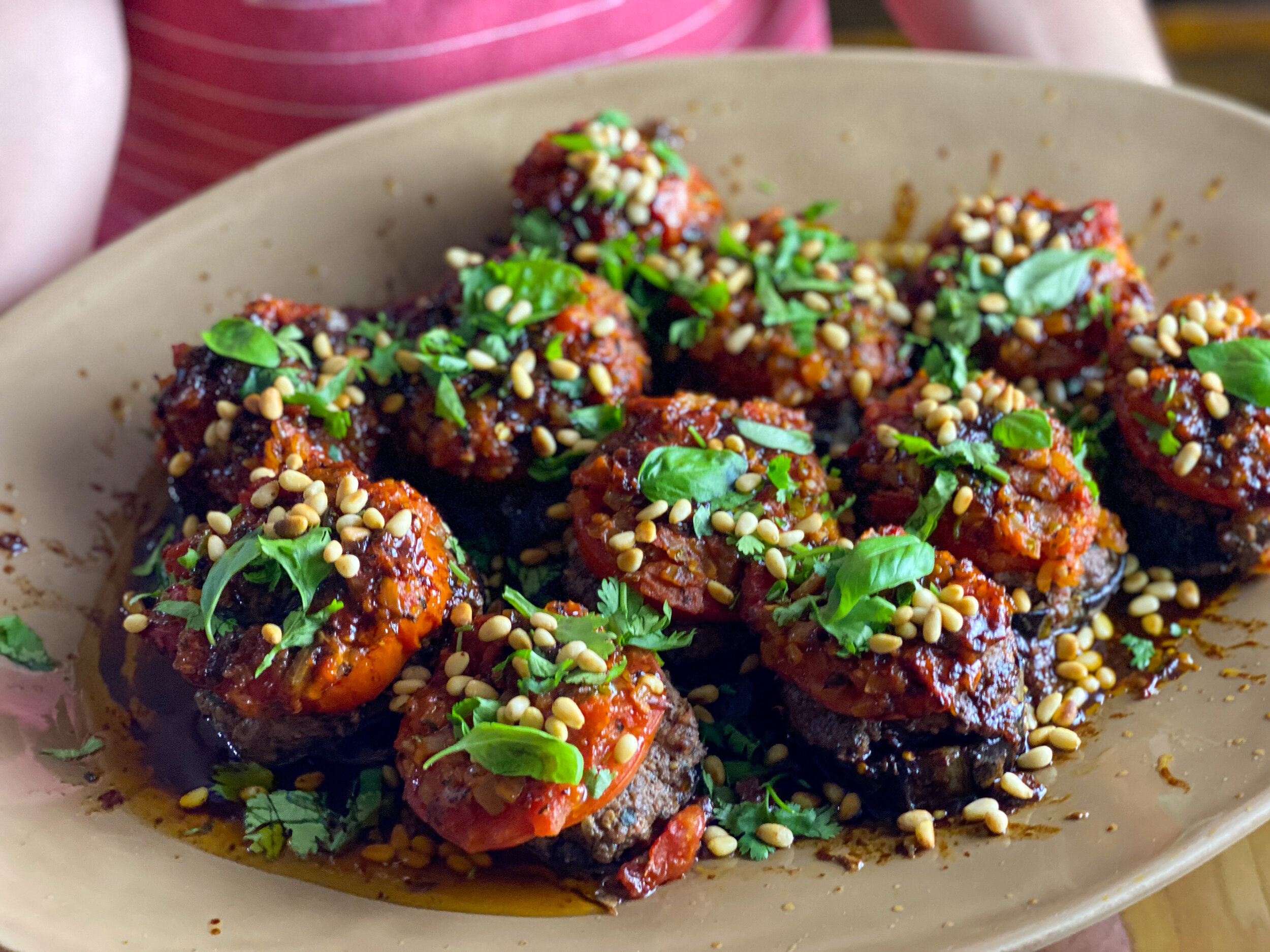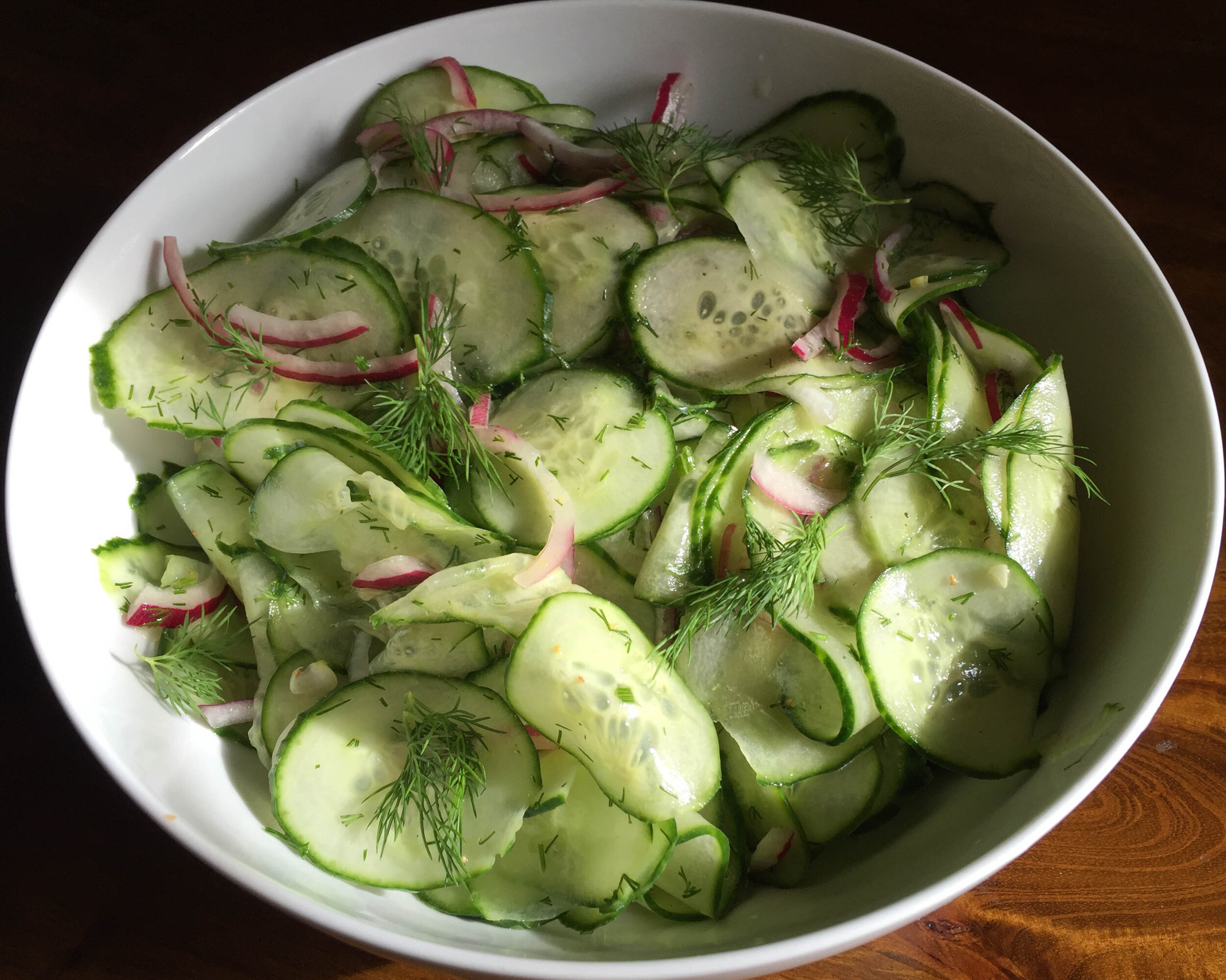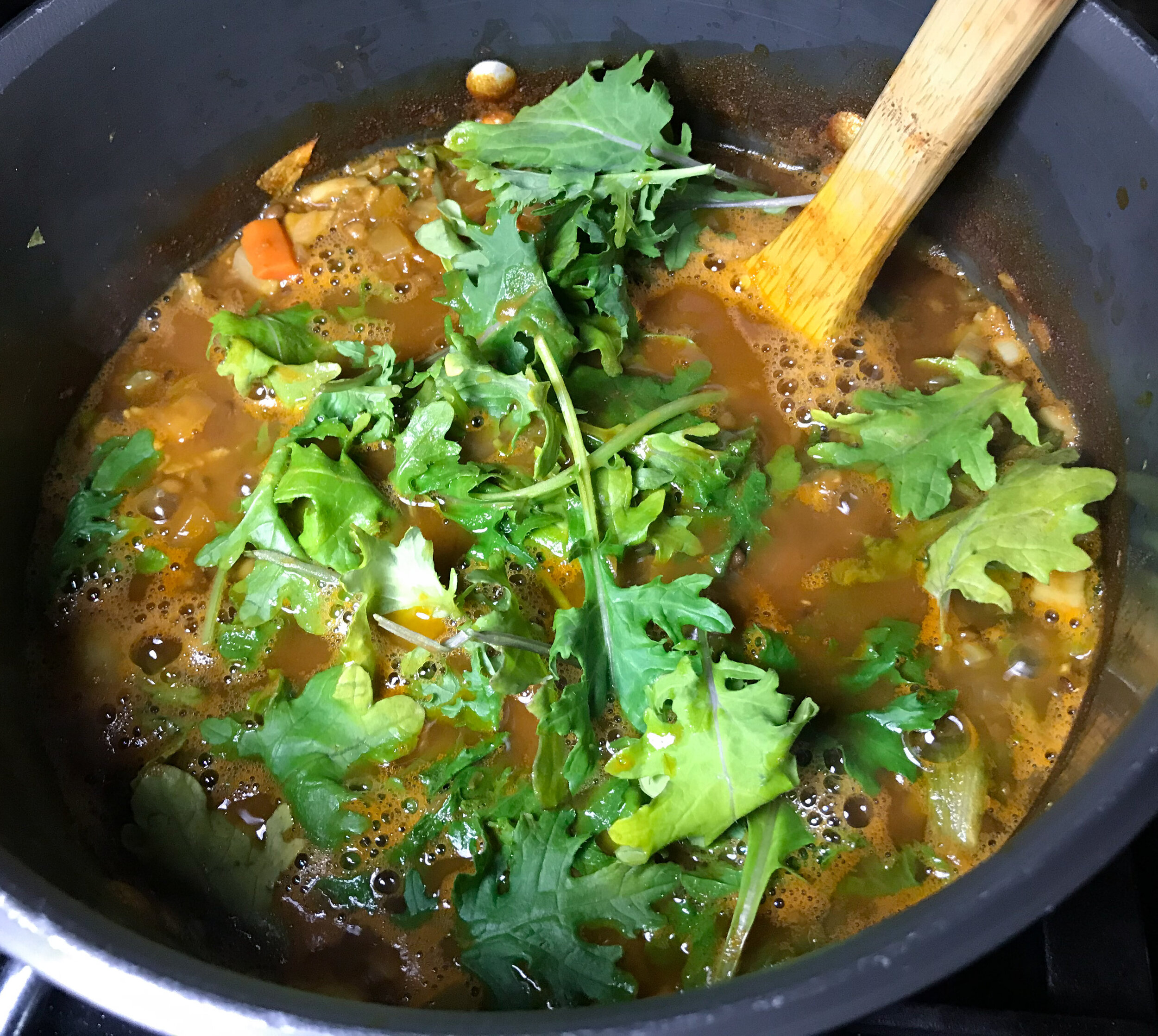My cookbook shelves are lined with hundreds of earnest volumes filled with culturally faithful recipes for legions of traditional dishes. Usually the recipes work and the dishes are correct, often they’re pretty good, occasionally they’re very good. But rarely, when cooked as written, are they so delicious that they make me want to cry.
Sami Tamimi and Tara Wigley’s Falastin: a Cookbook, which Ten Speed Press published last month, is bursting with recipes from Palastine that do just that.
Because it’s described in the headnote as “the hugely popular national dish of Palestine,” I stuck a Post-It on the page with Chicken Musakhan on my first pass through the book, as a reminder to cook it soon. But it looked so simple, like there was nothing to it — just some cut-up chicken rubbed with spices and roasted, served on flat bread with cooked onions (how great could that be?) — so I kept passing it by.
Until one evening I didn’t.
It was gobsmackingly, soul-stirringly fabulous. The chicken, a whole quartered bird, gets tossed with a lot of cumin and sumac, plus cinnamon, allspice, olive oil, salt and pepper, then roasted. Once out of the oven, it gets layered on crisped pieces of torn flatbread with a lot of long-cooked, sumac-and-cumin-loaded sliced red onions, fried pine nuts, plenty of parsley and spooned over with the roasting juices from the chicken. More olive oil gets drizzled on, and more sumac. It’s a stunning, fragrant centerpiece. Before serving it, you pull apart the chicken pieces with your fingers into two or three piece each. Put it in the middle of the table, and have everyone dive in, pulling the chicken apart with fingers, grabbing some soaky, juicy, crispy bread and sumac-ky onions, and groaning with pleasure, and diving back in.
When can we have this again??!!
I went back and reread the headnote. The dish was traditionally made during olive-oil pressing season to celebrate the freshly-pressed oil, but now it’s enjoyed year-round. “Growing up, Sami ate it once a week,” goes the headnote. “It’s a dish to eat with your hands and with your friends, served from one pot or plate, for everyone to then tear at some of the bread and spoon on the chicken and topping for themselves.”
Traditionally, taboon bread is used in the dish. Baked on pebbles in a conical oven, the bread has a pock-marked surface that are great for catching the juices. But the recipe calls for any Arabic flatbread (we used pita from a local Lebanese bakery that I’d stashed in the freezer), or naan.
I can see why Tamimi’s mom, Na’ama, made it once a week: It’s fun and easy to make, probably no more than an hour from start to finish, and a great crowd-pleaser. I’ll be buying sumac futures this week: A full three tablespoons of the spice (a powerful anti-oxidant) go into the dish.
If you’re not familiar with Tamimi, some context may be helpful. Chances are you do know of Yotam Ottolenghi and his cookbooks. Tamimi is head chef for and a founding partner in Ottolenghi’s namesake London restaurant empire. He co-authored Ottolenghi’s first cookbook (Ottolenghi: the Cookbook, 2008). Together the two — led by Ottolenghi — created a style of produce-forward, Levant-accented, slouchy-chic improvisational cooking. In other words, what they did powerfully influenced the way so many of us cook now, and the way food looks on blogs and on Instagram — seductively dissheveled, vegetable happy and casually strewn with tons of herbs.
The two chefs went on to co-author Jerusalem: a Cookbook (2012). Both had grown up in Jerusalem in the 70s and 80s — Ottolenghi, who is Israeli and Italian, in the Jewish west part of the city and Tamimi, who is Palestinian, in the Muslim east. They didn’t know each other back home; they met in London, where they were both living in the 1990s. To the Jerusalem project, each brought his delicious perspective, and they wove together a gorgeous, deep, inspired, cookable portrait of their hometown. The book didn’t shy away from politics, but its explorations managed to unify rather than divide.
With Falastin, Tamimi explores the cooking of his beloved Palestine. “There is no letter ‘P’ in the Arabic language,” begins the introduction, so ‘Falastin’ is, on the one hand, simply the way ‘Falastinians’ refer to themselves.’”
Of course there is an “on the other hand” — and that’s the substance of the book, which Tamimi co-authored with Tara Wigley, a cook and writer who also co-authored Ottolenghi’s most recent book, Ottolengi Simple, and who is an integral part of the Ottolenghi family.
Cilantro-crusted roasted cod with tahini sauce
Beautifully photographed by Jenny Zarins, it’s a wonderful read that conveys so much about the culture that you might feel you’ve been there, and fallen in love with its people. A visit to the apartment-house kitchen of the “yogurt-making ladies of Bethlehem” gives richness to a recipe for balls of labneh (thickened yogurt) marinated in olive oil then rolled in dried herbs or spices. A trip to the Jerusalem shop where Kamel Hashlamon produces tahini that’s “somewhere between a paste and a liquid and truly good enough to drink” makes us understand what separates great tahini from all the bitter crap we get stateside (Humera sesame seeds from Ethiopia, bespoke millstone made by a master Syrian stonemason, cold-pressing at 140 degrees).
The authors, refusing to tip-toe around the politics, address head-on the difficult questions that arise as they tour us around. For instance, it becomes clear that because Kamel sells to a largely Israeli (but also Palestinian) market, some feel he has “sold out.” When Kamel justifies his position by saying “We are all living in the result of the game,” Tamimi doesn’t let him off easy. In the end, though, the last image of his “small stunning shop,” with its irresistible product, is of Israelis and Palestinians standing “side by side at the counter, looking through the glass, debating little more than which halva to buy.” Complicated, uneasy, but what what a privilege it is to be let in on it in a cookbook.
From a culinary point of view, Falastin is also a rare gift: a cookbook filled with exuberantly delicious recipes, each with the special flair of a super-gifted chef, but without the ridiculous, long lists of obscure ingredients and sub-recipes that you needed to start preparing three days ago. These are approachable, thoughtfully crafted and apparently carefully tested recipes that are easy to follow, simple enough to execute and clearly designed to work for a moderately capable home cook.
If the aesthetic driver of the Ottolenghi books is herbs, with Falastin it is spices — lots of spices, aromatic, dreamy and unapologetic. Flavors in all the dishes are dialed way up. (One touch I really appreciate: Tamimi and Wigley never leave us guessing about how much salt to use — they always specify, and it’s always right on or close.)
Back to my bookshelves and all those earnest volumes. Among all the serious Middle Eastern, Levantine, Mediterranean and North African cookbooks, I hadn’t been able to find an appealing recipe for ful medames — the traditional fava bean dish that’s mostly closely associated with Egypt. There were recipes, sure, but none found any joy in the dish — which is, after all, really just doctored canned fava beans.
Tamimi has a wonderful way of elevating the ordinary. His version of ful starts by ridding the beans of their canned taste — by draining, rinsing, then simmering them in water, a five minute process that makes all the difference. Once they’re drained again, cumin is invited to the party, along with the lemon, garlic and chile. A delightful salad of red onion, sumac and parsley goes on top, along with tomato; avocado adds cool and creamy depth. Soft boiled egg, which is optional, adds another dimension.
Finally, the ful medames I dreamed of — so good I will make sure to keep canned favas stocked, so I can whip it up on a regular basis. (This is what I mean by life-changing.)
Not surprisingly, there’s a little overlap with the dishes in Jerusalem: It would be odd for this book not to include hummus, for instance, or tahini sauce. But the books complement each other really well: While Jerusalem gave us Maqluba, a one-pot layered dish of eggplant, chicken thighs and rice inverted onto a plate to serve, Falastin gives us Maqlubet el Foul el Akdhar — Upside-Down Spiced Rice with Lamb and Fava Beans. (Will be making that soon as I can source some Iranian dried limes!)
And while Jerusalem proposes Kofta B’siniya (seared lamb-and-beef patties in tahini sauce), Falastin offers Kofta Bil Batinjan — Baked Kofta with Eggplant and Tomato. Another major crowd-pleaser!
Kofta Bil Batinjan — Baked Kofta with Eggplant and Tomato
For the three of us, this was a fabulous dinner two nights running — the leftovers were every bit as delectable.
There are so many recipes I still have marked to try. Preserved Stuffed Eggplants; Cauliflower and Cumin Fritters with Mint Yogurt; Shatta (an exciting looking red or green chile sauce); Na’ama’s Buttermilk Fattoush; Roasted Eggplant with Tamarind and Cilantro; a zucchini, garlic and yogurt dip called M’tawaneh; Buttery Rice with Toasted Vermicelli; Eggplant, Chickpea and Tomato Bake (Musaq’a); Pomegranate-Cooked Lentils and Eggplants; Lemon Chicken with Za’atar.
There are baked treats that look incredible, too: Sweet Tahini Rolls, and the triangular spinach pies called Fatayer Sabanekh; Warbat — filo triangles filled with cream cheese and pistachio and doused in rose syrup, and definitely a Chocolate and Qahwa Flour-Free Torte, flavored with lots of cardamom and espresso (Qahwa is coffee in Arabic).
I love this book. I’m happy to think of its treasure-filled pages, and it gives me hope for the future — in more ways than one.
RECIPE: Cilantro-Crusted Roasted Cod
RECIPE: Baked Kofta with Eggplant and Tomato



































































